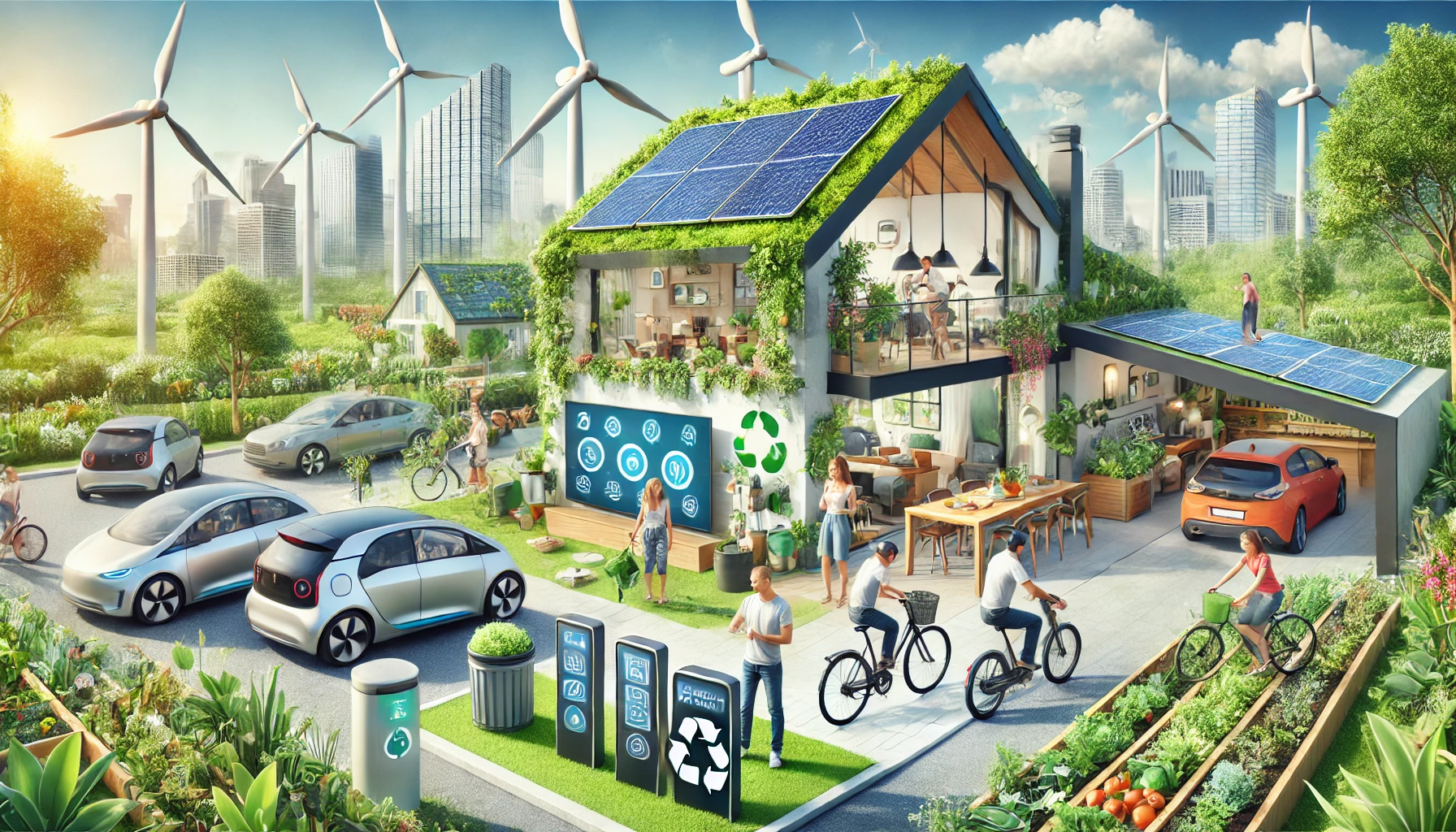
Understanding Your Carbon Footprint
A carbon footprint is the total amount of greenhouse gas emissions (GHGs) produced directly and indirectly by an individual, business, or activity. It is measured in carbon dioxide equivalent (CO2e), which includes carbon dioxide (CO2), methane (CH4), and nitrous oxide (N2O). These gases contribute to climate change by trapping heat in the atmosphere, leading to global warming.
How to Calculate Your Carbon Footprint
To effectively reduce your carbon footprint, you must first understand where your emissions come from. Use an online carbon footprint calculator, such as Carbon Footprint, to analyze your impact. This tool considers energy consumption, transportation, diet, and purchasing habits to estimate emissions.
Key Contributors to Carbon Footprints
-
Energy Use – Electricity, heating, and cooling in homes and offices
-
Transportation – Cars, planes, and public transport emissions
-
Diet and Food Waste – Meat consumption and food production impact
-
Waste Management – Recycling, composting, and single-use plastics
-
Consumer Habits – Fast fashion, electronics, and packaging waste
Reducing Energy Consumption for a Greener Future
1. Switch to Energy-Efficient Appliances
Using energy-efficient appliances is a simple way to save energy and reduce electricity bills. Energy Star-certified devices consume less energy, reducing fossil fuel dependence. Consider upgrading to:
-
LED lights – Use up to 75% less energy than incandescent bulbs (U.S. Department of Energy)
-
Smart thermostats – Adjust heating and cooling automatically to conserve energy
-
Energy-efficient refrigerators – Use less electricity and maintain optimal cooling
-
High-efficiency washing machines – Reduce water and energy use per load
2. Installing Solar Panels & Investing in Renewable Energy
Switching to renewable energy sources such as solar power and wind power significantly lowers your carbon footprint. Benefits include:
-
Long-term cost savings on electricity bills
-
Reduced reliance on fossil fuels like coal and natural gas
-
Tax incentives and rebates for solar panel installation (U.S. Department of Energy)
3. Optimize Energy Use at Home
-
Use power strips to easily turn off multiple electronics
-
Maximize natural light to reduce artificial lighting
-
Adjust air conditioning and heating settings to conserve energy
-
Seal windows and doors to prevent energy loss
Sustainable Food Practices to Reduce Your Carbon Footprint
1. Reduce Food Waste
Food waste contributes to methane gas emissions, a potent GHG. You can reduce food waste by:
-
Planning meals to avoid overbuying
-
Buying locally sourced food to minimize transportation emissions
-
Composting food scraps to create nutrient-rich soil
2. Adopt a Plant-Based Diet
Livestock farming generates 14.5% of global greenhouse gas emissions (FAO). Cutting back on meat and dairy significantly reduces your environmental impact. Consider:
-
Meatless Mondays – Reduce meat consumption once a week
-
Substituting plant-based proteins – Lentils, beans, and tofu are sustainable alternatives
-
Choosing sustainable seafood – Look for MSC-certified products (Marine Stewardship Council)
Water Conservation and Waste Reduction Strategies

1. Save Water at Home
Freshwater is a finite resource, and conserving it reduces energy needed for purification and distribution. Try:
-
Installing low-flow fixtures to reduce water usage
-
Taking shorter showers and turning off taps when not in use
-
Fixing leaks to prevent unnecessary water waste
2. Reduce Single-Use Plastics
Plastics take hundreds of years to decompose and pollute ecosystems. Reduce plastic waste by:
-
Using reusable shopping bags, bottles, and containers
-
Opting for recycled paper instead of plastic bags and paper towels
-
Choosing eco-friendly materials like natural fibers and biodegradable packaging
Sustainable Transportation Choices
1. Reduce Reliance on Fossil Fuels
Transport is a major source of carbon emissions. Minimize your impact by:
-
Using public transportation or carpooling to reduce fuel consumption
-
Driving an electric car or hybrid vehicle
-
Walking or biking for short-distance travel
2. Support Green Initiatives
-
Choose airlines that offer carbon credits for offsetting air travel
-
Advocate for bike lanes and improved public transport systems in your community
-
Invest in ride-sharing programs to minimize road congestion
Sustainable Products & Everyday Green Practices
1. Eco-Friendly Household Products
Switch to natural cleaning products and biodegradable alternatives to reduce chemical waste. Look for certified eco-friendly brands.
2. Sustainable Fashion Choices
-
Buy clothes made from organic cotton, hemp, or recycled fibers
-
Support second-hand shopping to reduce demand for fast fashion
-
Invest in high-quality, long-lasting wardrobe pieces
Reducing Carbon Emissions at Home and Work
1. Green Office and Home Practices
-
Implement a recycling bin system for plastic, glass, and paper
-
Use energy-efficient lighting and smart devices
-
Encourage remote work to cut down on commuting emissions
Community Involvement & Promoting Sustainability
1. Join Local Sustainability Initiatives
-
Support tree planting efforts and urban greening projects
-
Volunteer with environmental organizations
-
Engage in citizen science projects to track climate change impact
2. Advocate for Policy Changes
-
Support renewable energy subsidies and carbon reduction policies
-
Petition for banning single-use plastics in local communities
-
Encourage businesses to adopt greener supply chain practices
Conclusion: Take Action for a More Sustainable Future

Every small action contributes to a more sustainable lifestyle. By making mindful choices about energy consumption, transportation, food waste, and eco-friendly products, we can collectively work towards a greener future. Start implementing these sustainable living tips today and encourage others to join the movement toward a low-carbon, environmentally friendly world.
Additional Resources
